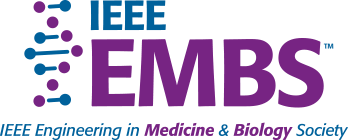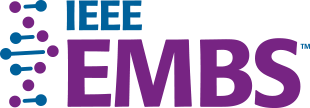2022 EMBS Administrative Committee (AdCom) Election Results
Please join us in congratulating the winners of the 2022 IEEE EMBS AdCom Election! These newly elected EMBS officers will begin serving in their roles on January 1, 2023.

Members-at-Large for a Three-Year Term : 1-January 2023 – 31- December 2025
Middle East and Africa Representative
Tammy Riklin Raviv
Latin America Representative
Joaquin Azpiroz Leehan
Universidad Autónoma Metropolitana
Practitioner Representatives
Luis Kun
William Perry -Center for Hemispheric Defense Studies @National Defense University
Natalie Mrachacz-Kersting
Albert-Ludwigs University Freiburg
Maryam M. Shanechi
University of Southern California
Nancey Trevanian Tsai
Medical University of South Carolina
Technical Representatives
Carlotta Guiducci
Ecole Polytechnique Fédérale de Lausanne
Tayo Obafemi-Ajayi
Missouri State University
Members-at-Large for a Two-Year: Term 1-January 2023 – 31- December 2024
Young Professional Representative
Nicolai Spicher
University Medical Center Goettingen
Student Representative
Nicole Caballero
Universidad Nacional Mayor de San Marcos
Member to fill a vacancy for a Two-Year: Term 1-January 2023 – 31- December 2024
North American Representative
Elebeoba E. May
University of Wisconsin – Madison
Full Slate of 2022 EMBS AdCom Election Candidates
FOR PRACTITIONER REPRESENTATIVE
For a Three-Year Term 1 January 2023 – 31 December 2025
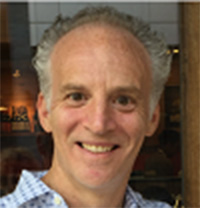 YALE COHEN My research program is devoted to studying the neural basis of hearing and sound perception. To be heard and understood, the brain must transform an incoming acoustic waveform into a perceptual representation. This perceptual representation is interpreted by a deliberative process that converts the incoming sensory evidence into an “auditory decision”.
YALE COHEN My research program is devoted to studying the neural basis of hearing and sound perception. To be heard and understood, the brain must transform an incoming acoustic waveform into a perceptual representation. This perceptual representation is interpreted by a deliberative process that converts the incoming sensory evidence into an “auditory decision”.
We use several complementary approaches to study this complex and important issue. The foundation of our studies lies in quantitative behavioral studies. We use computational modeling to predict the computational mechanisms that may be implemented in the brain. We then use direct, high-density measurements of brain activity in monkeys and human patients to identify these computations.
Our lab addresses two fundamental questions: (1) How does the auditory brain encode and categorize sounds? and (2) How does sound perception arise from neural activity?
Current and future work builds on these two research themes. (1) We use human psychophysics and brain recordings in monkeys to elucidate the computational and causal processes underlying auditory decision making. (2) We examine, in monkeys and human patients, the neural mechanisms that contribute to the auditory brain’s ability to segregate the acoustic information in the auditory environment into distinct sounds. (3) We design the next generation of electrodes to facilitate large-scale recordings of auditory-related brain activity. (4) We test the dynamics of mesoscopic populations of neurons by integrating ideas from statistical mechanics with neuroscientific principles. (5) Finally, we test how multisensory information is encoded at different spatiotemporal levels and how one level informs a different level.
Position Statement: IEEE-EMBS is the premiere bioengineering organization in the world. As the Graduate Chair of the University of Pennsylvania’s Bioengineering program, I am committed to improving the quality of its activities and impact on our community. I am particularly committed to improving diversity and inclusivity in Bioengineering education, at the undergraduate and graduate level through outreach STEM programs in our communities and by fostering welcoming communities in our universities. I am also committed to using IEEE EMBS as a lever to improve health equity and access.
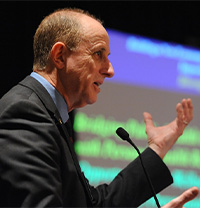 DR. LUIS KUN graduated from the Merchant Marine Academy in Uruguay and holds a BSEE; MSEE and Ph.D. degree in BME all from UCLA. He is a (Lifetime) Fellow of the IEEE, the American Institute for Medical and Biological Engineering, and the International Academy of Medical and Biological Engineering. He is a Distinguished Professor Emeritus of National Security Affairs (CHDS) and was Professor of Homeland Security at the National Defense University (2003-2015). He was cofounding Editor in Chief of Springer’s Journal of Health and Technology. Spent 14 years at IBM; was Director of Medical Systems Technology at Cedars Sinai Medical Center. As Senior IT Advisor to AHCPR he formulated the IT vision and was the lead staff for High Performance Computers and Communications program and Telehealth. In July 1997, as invited speaker to the White House, he was largely responsible for the first Telemedicine Homecare Legislation signed by President Clinton, August 1997. Represented the DHHS Secretary at a Forum of Health Care Ministers on Telecommunications and the HealthCare Industry in Mexico. While a Distinguished Fellow at the CDC, as Acting Chief IT Officer for the National Immunization Program, he formulated their IT vision on 10/2000. Kun received many awards including: AIMBE’s first-ever Fellow Advocate Award in 2009; IEEE-USA Citation of Honor Award, “For exemplary contributions in the inception and implementation of a healthcare IT vision in the US.” 2011 Golden Core Award by the IEEE CS. Named: “Profesor Honoris Causa” Favaloro University, (Argentina); “Distinguished Visitor” by the City of Puebla, Mexico (9/4/2013).
DR. LUIS KUN graduated from the Merchant Marine Academy in Uruguay and holds a BSEE; MSEE and Ph.D. degree in BME all from UCLA. He is a (Lifetime) Fellow of the IEEE, the American Institute for Medical and Biological Engineering, and the International Academy of Medical and Biological Engineering. He is a Distinguished Professor Emeritus of National Security Affairs (CHDS) and was Professor of Homeland Security at the National Defense University (2003-2015). He was cofounding Editor in Chief of Springer’s Journal of Health and Technology. Spent 14 years at IBM; was Director of Medical Systems Technology at Cedars Sinai Medical Center. As Senior IT Advisor to AHCPR he formulated the IT vision and was the lead staff for High Performance Computers and Communications program and Telehealth. In July 1997, as invited speaker to the White House, he was largely responsible for the first Telemedicine Homecare Legislation signed by President Clinton, August 1997. Represented the DHHS Secretary at a Forum of Health Care Ministers on Telecommunications and the HealthCare Industry in Mexico. While a Distinguished Fellow at the CDC, as Acting Chief IT Officer for the National Immunization Program, he formulated their IT vision on 10/2000. Kun received many awards including: AIMBE’s first-ever Fellow Advocate Award in 2009; IEEE-USA Citation of Honor Award, “For exemplary contributions in the inception and implementation of a healthcare IT vision in the US.” 2011 Golden Core Award by the IEEE CS. Named: “Profesor Honoris Causa” Favaloro University, (Argentina); “Distinguished Visitor” by the City of Puebla, Mexico (9/4/2013).
Position Statement: I have been involved with EMBS for the past 40 years in different capacities. Many of my contributions are at the intersection of healthcare, public health, national security and information technology disciplines; with science and technology public policy. While at IBM my focus was on technology: developed the first six clinical applications for the IBM PC; one of the pioneers on bedside terminals for Intensive Care; developer of a semi-expert, real-time, clinical decision support system, technical manager of the Nursing Point of Care System, the BME in the team of four that developed the first Teleradiology system and the first Picture Archival and Communications Systems to run on an IBM platform. During 1996-97-98, I prepared for the Clinton/Gore administration, documents supporting: Electronic Health Records, Telemedicine Clinical Decision Support to the US Congress in addition to HIPAA security/privacy of medical information, and the Next Generation Internet. During the Bush Administration, while at NDU, I prepared to Congress 3 Special issues of the EMBS magazine on BME and: Bioterrorism, Homeland Security and the Health and Public Health Critical Infrastructures (2002,04,08 respectively). Very active on the Distinguished Lecturer Program for EMBS, SSIT and CS (in the 2013-2017, 75 lectures worldwide). Gave the inaugural speech to the IEEE-EMBC 2010 in Buenos Aires. Represent EMBS on the Board of Governors of the IEEE-SSIT. Supports the concept of providing Fast Access Internet (net neutrality) to every household, as the “utility of the 21st century”, to avoid for example a digital divide in homecare delivery.
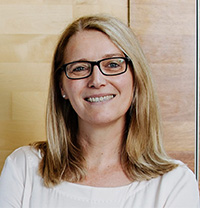 NATALIE MRACHACZ-KERSTING Professor Natalie Mrachacz-Kersting received her PhD in Biomedical Science and Engineering from The University of Aalborg, Denmark in 2005 and held several post-doctoral positions at the University of Auckland, New Zealand and Aalborg University, Denmark. From 2007 she was Associate Professor at the Center for Sensory-Motor Interaction, Aalborg University, and in 2019 Professor in Neuroscience and Medical Technologies at the University of Applied Sciences and Arts Dortmund, Germany. In June 2021, she accepted a position as full Professor in Neuroscience and Director of the Institute at the University of Freiburg, Germany. Her research focuses on neurorehabilitation technology for the restoration and replacement of lost motor function, and neural control of movement. She has (co)-authored more than 80 manuscripts in peer-reviewed Journals and >170 conference abstracts and papers. She was the recipient of the International Award in Brain-Computer-Interfaces in 2017 and received several prestigious grants from the Innovation Fond of Denmark, Kong Christian den Tiendes Fond and Lundbeck Fond of Denmark. She is currently Board Member of the Brain-Computer Interface Society where she also heads the fundraising committee and is part of the communications committee. She is Associate-Editor of several journals including Transactions on Neural Systems and Rehabilitation Engineering, Brain-Computer-Interfaces, Scandinavian Journal of Medicine and Science in Sports and Frontiers in Human Neuroscience. In Freiburg, she was recently appointed director of the student health management group that collaborates with health insurances to provide the student body with innovative opportunities to improve health in all aspects from psychological stress to time management.
NATALIE MRACHACZ-KERSTING Professor Natalie Mrachacz-Kersting received her PhD in Biomedical Science and Engineering from The University of Aalborg, Denmark in 2005 and held several post-doctoral positions at the University of Auckland, New Zealand and Aalborg University, Denmark. From 2007 she was Associate Professor at the Center for Sensory-Motor Interaction, Aalborg University, and in 2019 Professor in Neuroscience and Medical Technologies at the University of Applied Sciences and Arts Dortmund, Germany. In June 2021, she accepted a position as full Professor in Neuroscience and Director of the Institute at the University of Freiburg, Germany. Her research focuses on neurorehabilitation technology for the restoration and replacement of lost motor function, and neural control of movement. She has (co)-authored more than 80 manuscripts in peer-reviewed Journals and >170 conference abstracts and papers. She was the recipient of the International Award in Brain-Computer-Interfaces in 2017 and received several prestigious grants from the Innovation Fond of Denmark, Kong Christian den Tiendes Fond and Lundbeck Fond of Denmark. She is currently Board Member of the Brain-Computer Interface Society where she also heads the fundraising committee and is part of the communications committee. She is Associate-Editor of several journals including Transactions on Neural Systems and Rehabilitation Engineering, Brain-Computer-Interfaces, Scandinavian Journal of Medicine and Science in Sports and Frontiers in Human Neuroscience. In Freiburg, she was recently appointed director of the student health management group that collaborates with health insurances to provide the student body with innovative opportunities to improve health in all aspects from psychological stress to time management.
Position Statement: On the 25th October 2001 I took my first steps as a researcher within the IEEE EMBS community. It was in beautiful Istanbul and the 23rd Annual International Conference of the IEEE Engineering in Medicine and Biology Society. I was excited as I was nominated for an award and during my poster presentation my PhD Supervisor Professor Thomas Sinkjaer proceeded to collect people from all around the conference and to guide them to my poster. It was there that I learned what a tight knit and supportive community the IEEE-EMBS society is, taking special care of their young members. Since receiving my PhD in Biomedical Science and Engineering from The University of Aalborg, Denmark, the IEEE-EMBS Society has continued to be an important component of my research life. I have experienced fruitful exchanges of ideas and lively discussions on topics with other members and it is this openness of members/colleagues and between members that make up the special atmosphere at the Societies events. I would be honored to serve you as an IEEE EMBS ADCOM Practitioner representative, to bring new ideas into the collaborative network. I am excited to be able to serve you in bringing biomedical applications to those that need it, in serving you at society events, and in promoting the next generation of members to have a voice in the direction the society takes and to support all members who seek in forming connections to widen their own network.
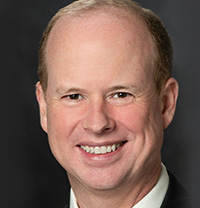 DR. JEFFREY PALMER is the Assistant Head of the Biotechnology and Human Systems Division at MIT Lincoln Laboratory. He shares responsibility for research, development, evaluation, and technology transfer in chemical and biological defense, human health & performance, and global resilience to climate, conflict, and disaster threats. Previously, he was the leader of the Human Health & Performance Systems Group that focused on AI-enabled biomedical tools, human performance enhancement, objective neurocognitive analytics, and biosensing via wearable, ingestible, and implantable devices. He has given presentations at international conferences and authored book chapters and technical articles on DNA biometrics and forensics, biomechanics, cell biology, materials science, soldier nanotechnology, biological-chemical defense, polymer science, high-energy lasers, microelectronics packaging, wearable biomedical sensing in extreme environments, and neurocognitive technologies. He has served on editorial boards for journals in biomechanics, molecular science, biomedical informatics, and biosensors. He has chaired technical conferences for the National Science Foundation, Department of Homeland Security, and the IEEE. He is a Senior Member of the IEEE, past chairman of the IEEE EMBS Technical Committee on Wearable Biomedical Sensors and Systems and on the editorial board for the IEEE OJEMB. He has served on international studies for enhancing health and performance. He currently serves on the faculty for the NIH RADx initiative and a NASEM standing committee. He holds a B.S. from New Mexico State Univ., an M.S. from Rensselaer Polytechnic Institute, and a Ph.D. (minor in bioengineering) from MIT, all in mechanical engineering.
DR. JEFFREY PALMER is the Assistant Head of the Biotechnology and Human Systems Division at MIT Lincoln Laboratory. He shares responsibility for research, development, evaluation, and technology transfer in chemical and biological defense, human health & performance, and global resilience to climate, conflict, and disaster threats. Previously, he was the leader of the Human Health & Performance Systems Group that focused on AI-enabled biomedical tools, human performance enhancement, objective neurocognitive analytics, and biosensing via wearable, ingestible, and implantable devices. He has given presentations at international conferences and authored book chapters and technical articles on DNA biometrics and forensics, biomechanics, cell biology, materials science, soldier nanotechnology, biological-chemical defense, polymer science, high-energy lasers, microelectronics packaging, wearable biomedical sensing in extreme environments, and neurocognitive technologies. He has served on editorial boards for journals in biomechanics, molecular science, biomedical informatics, and biosensors. He has chaired technical conferences for the National Science Foundation, Department of Homeland Security, and the IEEE. He is a Senior Member of the IEEE, past chairman of the IEEE EMBS Technical Committee on Wearable Biomedical Sensors and Systems and on the editorial board for the IEEE OJEMB. He has served on international studies for enhancing health and performance. He currently serves on the faculty for the NIH RADx initiative and a NASEM standing committee. He holds a B.S. from New Mexico State Univ., an M.S. from Rensselaer Polytechnic Institute, and a Ph.D. (minor in bioengineering) from MIT, all in mechanical engineering.
Position Statement: The challenges and opportunities to improve health at the individual and global scales are at critical inflection points under the strain of a world-wide pandemic, international conflict, and large-scale environmental disasters. The IEEE EMB Society is poised at the confluence of technologies and solutions that can impact people and their lives across those scales. Achieving this goal, however, will require humility, hard work, and collaboration of diverse practitioners from academia, industry, government, and clinical communities. I have spent my career working at the nexus of those communities, and have witnessed the power of inclusive culture that doesn’t allow great thinkers and their ideas to go unnoticed. I have thoroughly enjoyed my service to IEEE EMBS at multiple levels of leadership, authorship and conference engagement, and I hope to have a similar impact via the Administrative Committee.
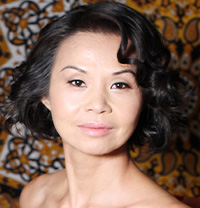 NANCEY TREVANIAN TSAI is a board certified Sports Medicine Physician, Diplomate of the American Board of Physical Medicine and Rehabilitation. She is a Clinical Professor of Neurosurgery at the Medical University of South Carolina. She is a past Chair of the American Council on Exercise, a past Chair of the South Carolina Medical Association Young Physicians Section, a member of the Medical Society of South Carolina, the Clinician representative for the IEEE Engineering in Medicine and Biology AdCom, an officer of the South Carolina section of the IEEE. She has a provisional and utility patent for the Blink Reflexometer, a full patent in Australia and Japan, and the United States. She has also been a member of the USA Field Archery Team in 2010, 2012, and a national coach for USA Archery/Para-archery.
NANCEY TREVANIAN TSAI is a board certified Sports Medicine Physician, Diplomate of the American Board of Physical Medicine and Rehabilitation. She is a Clinical Professor of Neurosurgery at the Medical University of South Carolina. She is a past Chair of the American Council on Exercise, a past Chair of the South Carolina Medical Association Young Physicians Section, a member of the Medical Society of South Carolina, the Clinician representative for the IEEE Engineering in Medicine and Biology AdCom, an officer of the South Carolina section of the IEEE. She has a provisional and utility patent for the Blink Reflexometer, a full patent in Australia and Japan, and the United States. She has also been a member of the USA Field Archery Team in 2010, 2012, and a national coach for USA Archery/Para-archery.
Position Statement: As a senior member and section officer of IEEE who has achieved success in academic medicine, private practice, as well as being an innovator, an entrepreneur, I have experience with process and overcoming systemic and social barriers to creating meaningful change. One of the mid-life and career challenges is to articulate the necessary elements to assist others in finding fulfillment in their work, their life. Fortunately, I have reached a state where I am able to give of my time and energy freely and am heeding the call to contribute. Over the past three years, much of which was taken up by the pandemic, I have been an advocate for wellness activities to decrease risk of morbidity and mortality from the virus, as well as using the opportunity for teaching critical thinking and assessment of the – often conflicting – data presented.
The IEEE is one of the few organizations that has continued to evolve, encompassing a wide berth of industries that have specialty interest and use for electronics and engineering. Remarkably, it has maintained a relatively wholesome reputation, focused on efficiency, effectiveness, and productivity. Medicine and Biology continue to be areas where there continues to be improvements in gender and racial discrepancies for promotions and remuneration. By continuing to challenge known and unnamed assumptions in science and technology, a symphony of diverse voices and perspectives may elevate industry to greater harmony for the human state. I am grateful to have the time, energy, and stability to serve in this capacity. I look forward to engaging with our members meaningfully.
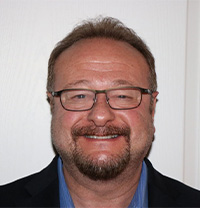 PETER L. ELKIN serves as the UB Distinguished Professor and Chair of the UB Department of Biomedical Informatics. Dr. Elkin has published over 200 peer reviewed publications and book chapters. He received his Bachelors of Science from Union College and his M.D. from New York Medical College. He did his NIH/NLM sponsored fellowship in Medical Informatics at Harvard Medical School and the Massachusetts General Hospital. Dr. Elkin has been working in Biomedical Informatics since 1981 and has been actively researching health big data science since 1987. Dr. Elkin is a Master of the American College of Physicians and a Fellow of the American College of Medical Informatics and a Fellow of the New York Academy of Medicine. He was awarded the Mayo Department of Medicine’s Laureate Award for 2005. Dr. Elkin is the index recipient of the Homer R. Warner award for outstanding contribution to the field of Medical Informatics. Dr. Elkin is an internationally renowned expert in knowledge representation, ontology, natural language processing and health IT standards. Dr. Elkin in 2018 received the Team Science Award from the National Center for Advancement of Translational Sciences and was elected an inaugural fellow of the American Medical Informatics Association for Clinical Informatics excellence and has been elected to the International Academy of Health Sciences Informatics. He serves as co-chair of the NCATS iEC and of the NCATS Informatics Quality Metrics Committee. He publishes the Springer series Textbook on Ontology, Terminology and Terminological Systems.
PETER L. ELKIN serves as the UB Distinguished Professor and Chair of the UB Department of Biomedical Informatics. Dr. Elkin has published over 200 peer reviewed publications and book chapters. He received his Bachelors of Science from Union College and his M.D. from New York Medical College. He did his NIH/NLM sponsored fellowship in Medical Informatics at Harvard Medical School and the Massachusetts General Hospital. Dr. Elkin has been working in Biomedical Informatics since 1981 and has been actively researching health big data science since 1987. Dr. Elkin is a Master of the American College of Physicians and a Fellow of the American College of Medical Informatics and a Fellow of the New York Academy of Medicine. He was awarded the Mayo Department of Medicine’s Laureate Award for 2005. Dr. Elkin is the index recipient of the Homer R. Warner award for outstanding contribution to the field of Medical Informatics. Dr. Elkin is an internationally renowned expert in knowledge representation, ontology, natural language processing and health IT standards. Dr. Elkin in 2018 received the Team Science Award from the National Center for Advancement of Translational Sciences and was elected an inaugural fellow of the American Medical Informatics Association for Clinical Informatics excellence and has been elected to the International Academy of Health Sciences Informatics. He serves as co-chair of the NCATS iEC and of the NCATS Informatics Quality Metrics Committee. He publishes the Springer series Textbook on Ontology, Terminology and Terminological Systems.
Position Statement: I am committed to improving health and healthcare nationally. I have been involved in both national and international Health It policy for many years. I would enjoy the opportunity to serve as one of the practitioners on the IEEE committee in medicine. In addition to my research, I still practice both in the inpatient and outpatient settings and I teach medical students, residents and fellows. I look forward to sharing my experience and expertise with the leadership team.
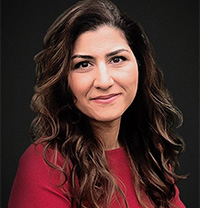 MARYAM SHANECHI is Associate Professor and Viterbi Early Career Chair in Electrical and Computer Engineering (ECE), Biomedical Engineering, Computer Science, and Neuroscience at the University of Southern California. Prior to joining USC, she was Assistant Professor at Cornell University’s ECE department in 2014. She received her B.A.Sc. degree in Engineering Science from the University of Toronto, her S.M. and Ph.D. degrees in Electrical Engineering and Computer Science from MIT, and her postdoctoral training in Neural Engineering at Harvard Medical School and UC Berkeley. Her research focuses on developing closed-loop neurotechnology and studying the brain through decoding and control of neural dynamics. She is the recipient of several awards including the NIH Director’s New Innovator Award, NSF CAREER Award, ONR Young Investigator Award, ASEE’s Curtis W. McGraw Research Award, MIT Technology Review’s top 35 Innovators Under 35, Popular Science Brilliant 10, Science News SN10, and a DoD Multidisciplinary University Research Initiative (MURI) Award.
MARYAM SHANECHI is Associate Professor and Viterbi Early Career Chair in Electrical and Computer Engineering (ECE), Biomedical Engineering, Computer Science, and Neuroscience at the University of Southern California. Prior to joining USC, she was Assistant Professor at Cornell University’s ECE department in 2014. She received her B.A.Sc. degree in Engineering Science from the University of Toronto, her S.M. and Ph.D. degrees in Electrical Engineering and Computer Science from MIT, and her postdoctoral training in Neural Engineering at Harvard Medical School and UC Berkeley. Her research focuses on developing closed-loop neurotechnology and studying the brain through decoding and control of neural dynamics. She is the recipient of several awards including the NIH Director’s New Innovator Award, NSF CAREER Award, ONR Young Investigator Award, ASEE’s Curtis W. McGraw Research Award, MIT Technology Review’s top 35 Innovators Under 35, Popular Science Brilliant 10, Science News SN10, and a DoD Multidisciplinary University Research Initiative (MURI) Award.
Position Statement: I have been an IEEE member since being a freshman in college, for 2 decades now. Over the years, being an IEEE member made me feel part of a larger community of professionals, who while diverse in their expertise, shared a common set of ideals and goals: to use engineering for the greater good. I benefited substantially from being included in the conferences and meetings, and from being invited to speak at various EMBS events. These interactions provided me with the opportunity to find collaborators, to disseminate my work, and to feel included. If elected, I will work to strengthen and expand the opportunities provided by the IEEE EMBS especially for students and junior faculty in terms of meetings, technical or career workshops, or summer schools. I will also work to diversify the topics covered in the meetings and workshops by encouraging interdisciplinary scientists – such as neurosurgeons, psychiatrists, neuroscientists – to join the society and meetings. As we aim to tackle more complex problems that cut across multiple disciplines, participation from these diverse groups of scientists will facilitate collaborations and progress. I will also work to increase diversity in the speaker and attendee pools by identifying, inviting, and involving women and underrepresented minorities.
FOR TECHNICAL REPRESENTATIVE
For a Three-Year Term 1 January 2023 – 31 December 2025
 DR. FEDER LEHOCKI is assistant professor at the Faculty of Informatics and Information Technologies at the Slovak University of Technology in Bratislava, Slovak Republic. Since 2011 he served also as director of the National Centre of Telemedicine Services (NCTS) established in cooperation with IBM, WHO Country Office in the Slovak Republic and the Slovak Medical Chamber. He is member of IEEE EMBS and member of Medical Terminology and Health Informatics Standards Center serving as advisory body for Ministry of Health of the Slovak Republic. He is coauthor of the strategic documents for the Slovak government related to national eHealth program. His research interests are mainly in the following topics: mHealth, telemedicine technology, systems and services, clinical decision support systems, knowledge representation, remote monitoring and treatment. He was jointly responsible for twelve research projects in domain of health telematics with funding from academia and industry. Dr. Lehocki served as Associate Editor of the IEEE Journal of Biomedical and Health Informatics (J-BHI) and was reviewer for Biomedical Engineering Book Series published by the Wiley and IEEE Press. He was chair and organizer of the special session on telehealth systems at IEEE EMBC 2012 conference and served as the program committee member and reviewer for many international conferences in domain of biomedical engineering. Since 2013 he serves as the founding chair and organizer of the 1st IEEE EMBS Summer School on Emerging Technologies and Applications in Telemedicine (IEEE EMBS ETAT).
DR. FEDER LEHOCKI is assistant professor at the Faculty of Informatics and Information Technologies at the Slovak University of Technology in Bratislava, Slovak Republic. Since 2011 he served also as director of the National Centre of Telemedicine Services (NCTS) established in cooperation with IBM, WHO Country Office in the Slovak Republic and the Slovak Medical Chamber. He is member of IEEE EMBS and member of Medical Terminology and Health Informatics Standards Center serving as advisory body for Ministry of Health of the Slovak Republic. He is coauthor of the strategic documents for the Slovak government related to national eHealth program. His research interests are mainly in the following topics: mHealth, telemedicine technology, systems and services, clinical decision support systems, knowledge representation, remote monitoring and treatment. He was jointly responsible for twelve research projects in domain of health telematics with funding from academia and industry. Dr. Lehocki served as Associate Editor of the IEEE Journal of Biomedical and Health Informatics (J-BHI) and was reviewer for Biomedical Engineering Book Series published by the Wiley and IEEE Press. He was chair and organizer of the special session on telehealth systems at IEEE EMBC 2012 conference and served as the program committee member and reviewer for many international conferences in domain of biomedical engineering. Since 2013 he serves as the founding chair and organizer of the 1st IEEE EMBS Summer School on Emerging Technologies and Applications in Telemedicine (IEEE EMBS ETAT).
Position Statement: Living in today‘s world is exciting. Things are changing so fast as digital technologies continues to penetrate and integrate into our lives also thanks to intersection of research, development and education in engineering, healthcare, and life sciences. Healthcare has potential to become more accessible as we can bring the care to a patient without need to leave her home. The trend of these positive disruptive changes needs to be continuously supported through our EMB society by getting healthcare innovators involved to translate engineering innovations in practice helping to solve many challenging clinical and healthcare problems. As for our conferences and technical activities it needs to be more appealing to the students. One of the opportunities to reach this goal is through continuous support to our local chapters. By support we can understand access to our more experienced colleagues in the EMBS to consult and exchange experience with local chapter representatives on various issues in managing conferences, workshops or networking to organize journal special issues. Focus on fostering these local expertise, knowledge and opinions will help to include and further promote diversity and inclusion. The dynamic and actionable touch in supporting the mission of EMBS can come from greater involvement of our female colleagues. Promoting biomedical engineering and the opportunities it can provide in learning and future careers in close collaboration with high schools in EU can increase the visibility of the field among female students and create sustainable channel in their involvement as the future professionals.
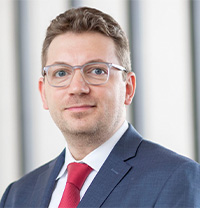 UMUT GURKAN, Ph.D., is the Warren E. Rupp Associate Professor with tenure at Case Western Reserve University. Dr. Gurkan holds a Ph.D. degree in Biomedical Engineering from Purdue University. He completed his postdoctoral training at Harvard Medical School and Harvard-MIT Health Sciences and Technology. Dr. Gurkan is a leader in the efficient translation of microfluidics and point-of-care diagnostics for blood disorders. His research has been supported by the NSF, NIH, DoD, non-profit organizations, and several industrial partners. Dr. Gurkan’s inventions have led to 12 issued US patents and four successful biotechnology companies with products in global markets. Dr. Gurkan’s innovations won numerous awards, including USPTO Patents for Humanity recognition and USFDA Breakthrough Device Designation. His honors include National Science Foundation CAREER Award, American Society for Engineering Education Curtis W. McGraw Research Award Finalist, Translational Research Featured New Investigator Award, Biomedical Engineering Society Rising Star Award, MIT Technology Review Innovator under 35 Award, Doris Duke Innovations in Clinical Research Award, and NHLBI featured him in Today’s Faces of Sickle Cell Disease. Dr. Gurkan is a member of the IEEE Engineering in Medicine and Biology Society (EMBS), the American Society of Mechanical Engineers, the Biomedical Engineering Society, and the American Society of Hematology. Dr. Gurkan is a Senior Member of the National Academy of Inventors (NAI), a member of the New Voices in Science, Engineering and Medicine Program by the National Academies of Sciences, Engineering, and Medicine (NASEM), and a fellow of the American Institute for Medical and Biological Engineering (AIMBE).
UMUT GURKAN, Ph.D., is the Warren E. Rupp Associate Professor with tenure at Case Western Reserve University. Dr. Gurkan holds a Ph.D. degree in Biomedical Engineering from Purdue University. He completed his postdoctoral training at Harvard Medical School and Harvard-MIT Health Sciences and Technology. Dr. Gurkan is a leader in the efficient translation of microfluidics and point-of-care diagnostics for blood disorders. His research has been supported by the NSF, NIH, DoD, non-profit organizations, and several industrial partners. Dr. Gurkan’s inventions have led to 12 issued US patents and four successful biotechnology companies with products in global markets. Dr. Gurkan’s innovations won numerous awards, including USPTO Patents for Humanity recognition and USFDA Breakthrough Device Designation. His honors include National Science Foundation CAREER Award, American Society for Engineering Education Curtis W. McGraw Research Award Finalist, Translational Research Featured New Investigator Award, Biomedical Engineering Society Rising Star Award, MIT Technology Review Innovator under 35 Award, Doris Duke Innovations in Clinical Research Award, and NHLBI featured him in Today’s Faces of Sickle Cell Disease. Dr. Gurkan is a member of the IEEE Engineering in Medicine and Biology Society (EMBS), the American Society of Mechanical Engineers, the Biomedical Engineering Society, and the American Society of Hematology. Dr. Gurkan is a Senior Member of the National Academy of Inventors (NAI), a member of the New Voices in Science, Engineering and Medicine Program by the National Academies of Sciences, Engineering, and Medicine (NASEM), and a fellow of the American Institute for Medical and Biological Engineering (AIMBE).
Position Statement: As a technical representative in the IEEE EMB Society Administrative Committee, I would like to promote diversity and inclusion in engineering and biomedical sciences. My peers have recognized my dedication to diversity, inclusion, and equity. For example, I am a Senior Member of the National Academy of Inventors (NAI) and a fellow of the American Institute for Medical and Biological Engineering (AIMBE). I am a member of the New Voices cohort (2021-2023), an initiative of the National Academies of Sciences, Engineering, and Medicine (NASEM). My priorities as a member of these elite institutes build on my life mission and values and are twofold:
- To raise awareness and generate programs and policies for improving diversity and inclusion in academic innovation and entrepreneurship.
- To raise awareness and generate programs and policies for improving access to medical technologies, treatments, and cures in underserved communities.
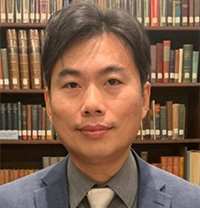 KIN FONG LEI is a Professor in Biomedical Engineering and a Dean for International Affairs at Chang Gung University (CGU), Taiwan. Prior to joining CGU, he was a Lecturer at The Hong Kong Polytechnic University, Hong Kong (2007-2010). He received B.S. degree from National Tsing-Hua University, Taiwan (1998), and Ph.D. degree from The Chinese University of Hong Kong, Hong Kong (2005). In 2006, he was a postdoctoral fellow at the University of Western Ontario, Canada. Dr. Lei has made significant original contributions to research in bio-physics, bio-microfluidics, and bio-sensing. He has published over 100 academic articles and was invited to contribute in 8 book/book chapters. Dr. Lei is a Fellow of the Royal Society of Chemistry (RSC), Fellow of the Institute of Physics (IOP), Senior Member of the Institute of Electrical and Electronics Engineers (IEEE), and Member of the American Society of Mechanical Engineers (ASME). He serves as a Chair (2020-2021) of IEEE-EMBS Technical Committee on Bionanotechnology and BioMEMS (BNM) and Associate Editor at EMBS Conference Editorial Board in 2020 and 2021. He also served as an organizing committee member for many IEEE conferences for MEMS/microfluidics researchers. Dr. Lei is currently an Associate Editor of the IEEE Access and the IEEE Transactions on NanoBioscience, and Editorial Board Member of the Scientific Reports. Dr. Lei has been listed in World’s Top 2% Scientists 2020 and was selected as IEEE-NTC Distinguished Lecturer.
KIN FONG LEI is a Professor in Biomedical Engineering and a Dean for International Affairs at Chang Gung University (CGU), Taiwan. Prior to joining CGU, he was a Lecturer at The Hong Kong Polytechnic University, Hong Kong (2007-2010). He received B.S. degree from National Tsing-Hua University, Taiwan (1998), and Ph.D. degree from The Chinese University of Hong Kong, Hong Kong (2005). In 2006, he was a postdoctoral fellow at the University of Western Ontario, Canada. Dr. Lei has made significant original contributions to research in bio-physics, bio-microfluidics, and bio-sensing. He has published over 100 academic articles and was invited to contribute in 8 book/book chapters. Dr. Lei is a Fellow of the Royal Society of Chemistry (RSC), Fellow of the Institute of Physics (IOP), Senior Member of the Institute of Electrical and Electronics Engineers (IEEE), and Member of the American Society of Mechanical Engineers (ASME). He serves as a Chair (2020-2021) of IEEE-EMBS Technical Committee on Bionanotechnology and BioMEMS (BNM) and Associate Editor at EMBS Conference Editorial Board in 2020 and 2021. He also served as an organizing committee member for many IEEE conferences for MEMS/microfluidics researchers. Dr. Lei is currently an Associate Editor of the IEEE Access and the IEEE Transactions on NanoBioscience, and Editorial Board Member of the Scientific Reports. Dr. Lei has been listed in World’s Top 2% Scientists 2020 and was selected as IEEE-NTC Distinguished Lecturer.
Position Statement: As a past Chair of IEEE-EMBS Technical Committee on Bionanotechnology and BioMEMS (BNM), I have been already involved in various activities of EMBS. For the willingness, I organized invited sessions in IEEE-EMBC 2018 (Hawaii), 2019 (Berlin), and 2020 (Montreal). In addition, I serve as an Associate Editor in EMBS Section for IEEE Access and an Associate Editor at EMBS Conference Editorial Board in 2020 and 2021. I am willing and have the ability to promote EMBS activities. With the increasing research of biomedical engineering in Asia (including Taiwan, China, Japan, and Hong Kong), the EMBS should work with the chapters and representatives in Asia and organize activities in Asia to promote the member number. I would communicate between local chapters and provide support to our volunteers for the long-term development of the chapters. I would continue to build bridges between EMBS and local Asian organizations. I am the Director Board Member of Nanotechnology and Micro System Association (NMA), Taiwan, which is a mature platform linking academics, professionals, and industrials. Our association is also interested in co-organizing conferences and summer schools in Asia with EMBS. I will leverage my connection with industrial partners to continue to support EMBS activities. I would be honored to serve EMBS as an AdCom Technical Representative. If elected, I will dedicate time and effort to grow the excellence of service and contribute to society.
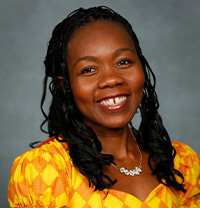 TAYO OBAFEMI-AJAYI is an Associate Professor of Electrical Engineering at Missouri State University (Springfield, Missouri, USA) in the Cooperative Engineering program (joint agreement with Missouri University of Science and Technology, Rolla, Missouri). She is also the faculty director of the Computational learning systems lab and the site coordinator for the Missouri Louis Stokes Alliance for Minority Participation (MoLSAMP) at the university. In this role, she has mentored over 20 students of color to engage in STEM related research. She is the secretary of the IEEE Southwest MO section and the vice-chair (Education) for the Bioinformatics and Bioengineering Technical Committee (BBTC) of the IEEE computational intelligence society. Her research centers on development and applications of machine learning algorithms. Motivated by practical needs in biomedical applications, her overall goal is to design intelligent systems that analyze large data sets and make meaningful predictions for a variety of bioscience applications. She has ten journal publications in a variety of technical journals and over twenty conference proceedings as well as a book on “Computational Learning Approaches to Data Analytics in Biomedical Applications”, published by Elsevier in 2019. Her recent paper on “A deep learning model to predict traumatic brain injury severity and outcome from MR images”, obtained the Best paper award at the IEEE Conference on Computational Intelligence in Bioinformatics and Computational Biology (CIBCB), Oct 2021. In January 2023, she will begin a sabbatical year at the Cedars-Sinai Department of Computational Biomedicine.
TAYO OBAFEMI-AJAYI is an Associate Professor of Electrical Engineering at Missouri State University (Springfield, Missouri, USA) in the Cooperative Engineering program (joint agreement with Missouri University of Science and Technology, Rolla, Missouri). She is also the faculty director of the Computational learning systems lab and the site coordinator for the Missouri Louis Stokes Alliance for Minority Participation (MoLSAMP) at the university. In this role, she has mentored over 20 students of color to engage in STEM related research. She is the secretary of the IEEE Southwest MO section and the vice-chair (Education) for the Bioinformatics and Bioengineering Technical Committee (BBTC) of the IEEE computational intelligence society. Her research centers on development and applications of machine learning algorithms. Motivated by practical needs in biomedical applications, her overall goal is to design intelligent systems that analyze large data sets and make meaningful predictions for a variety of bioscience applications. She has ten journal publications in a variety of technical journals and over twenty conference proceedings as well as a book on “Computational Learning Approaches to Data Analytics in Biomedical Applications”, published by Elsevier in 2019. Her recent paper on “A deep learning model to predict traumatic brain injury severity and outcome from MR images”, obtained the Best paper award at the IEEE Conference on Computational Intelligence in Bioinformatics and Computational Biology (CIBCB), Oct 2021. In January 2023, she will begin a sabbatical year at the Cedars-Sinai Department of Computational Biomedicine.
Position Statement: My teaching and research interests are in machine learning applied in biomedicine. EMBS has been my technical home for seven years, and my co-authored book was an outgrowth of a well-attended tutorial at EMBC. I also serve as the vice-chair (Education) for the Bioinformatics and Bioengineering Technical Committee (BBTC) of the IEEE Computational Intelligence Society, and as the local IEEE branch secretary. I have published papers in EMBS conferences and journals as well as being involved in reviewing activities for various IEEE societies, including EMBS; as well as the National Science Foundation. I would like to serve as an AdCom member to promote diversity and inclusion initiatives aligned with the mission statement of EMBS. The field interests of EMBS are paramount to society. We can ensure that our contributions are most impactful by maximizing inclusivity and accessibility. Thus, we will be best positioned to continue to promote excellence in the standards we set, the dissemination of knowledge, well as the professional development activities we offer to our members for the benefit of humanity. I seek to work alongside with the other AdCom members to promote the educational and technical interests of EMBS and broaden our sphere of influence.
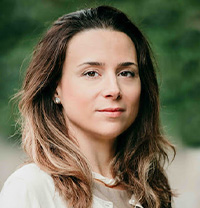 CARLOTTA GUIDUCCI is associate professor of Bioengineering and Electrical Engineering
CARLOTTA GUIDUCCI is associate professor of Bioengineering and Electrical Engineering
at the Swiss Federal Institute of Technology in Lausanne, Switzerland. She received the Ph.D. degree in Electrical Engineering from University of Bologna (I). Her most prominent achievements as graduate and postgraduate student have been the demonstration of the quantification of DNA hybridization via changes of electrodes interface capacitance, and the development of the first fully-integrated CMOS chips featuring arrays based on this sensing approach. As a PI at EPFL, her research has focused on the integration and the interfacing issues of lab-on-chip devices. Her most significant achievements include two lab-on-chip/CMOS integration solutions and a novel technology for microfluidic-embedded microsensors that represent unique and highly exploitable technologies. Her lab developed functional electronic systems to support the monitoring of medical therapies and wearable clinical diagnostic systems. Carlotta Guiducci was a recipient of the 2013 Intel Early Career Faculty Honor Program Award and the coordinator of a national Swiss consortium on Therapeutic Drug Monitoring (Nano-tera.ch) from 2010 to 2017. She is member of the Swiss Ethical Committee for the Research on Humans and member of the Administrative Board of the Engineering in medicine and Biology Society of the IEEE since 2020.
Position Statement: I am professor in Bioengineering and Electrical Engineering at the Swiss Federal Institute of Technology in Lausanne, Switzerland. I hold my position as a professor since 2009 and I am a tenured faculty member since 2018. Let me address three main points to illustrate why I think the EMB Society could benefit of having me in a decision-making position.
My experience as a former tenure-track faculty
Only few institutions in Europe – and only since very recently – have established a tenure track system for the recruitment of junior professors. The Swiss Federal Institute of Technology in Lausanne have had this in place since approximately 15 years. EPFL is an extremely international environment with many colleagues bearing previous experiences in theUS academia. The best practices of the tenure-track processes have been brought along by such new resources, on topics such as the selection process, the independence of candidates and their mentoring. Europe remains substantially different from the US in terms of research environment (e.g. scale of institutions), ways to get visibility and network, funding of research. I believe to have gained a unique experience as a former tenure-track faculty in a top-tiers university in Europe and I could help the Society to support its junior PI members located here who are striving to get promoted in newly established, and maybe slightly undefined, selection systems.
Interdisciplinarity and clinical Translation
I am an EE graduate from the University of Bologna (I). Since my diploma in 2001, I moved progressively towards biomedical engineering, committing to projects to advance the state-of-the art of molecular analytics, first, and later of other fields of bioanalytics. My core competences as an engineer are now in microfabrication and design of hybrid systems, while I conceive my work based on the needs of the fields of diagnostics and bioanalytics-biomonitoring systems.
In the course of my research activity, and in particular as a principal investigator, I had multiple opportunities to collaborate with medical doctors in different fields of analytics and sample elaboration. I learned how to leverage complementary competences and to improve communication, while setting common goals. Let me briefly describe some of the activities my lab has been carrying out with the clinics.
(i) My lab has a long-standing collaboration with the Department of Clinical Pharmacology and Toxicology at CHUV (University Hospital in Lausanne) in a common effort towards supporting and extending the employment of individualized therapies based on drug monitoring. Our team developed a new highly compact technique to quantify drug concentration in patients’ blood samples and we have several publications together.
(ii) We have established as well a collaboration with the Department of Obstetrics at CHUV for the development of wearable system to monitor the risk of pre-term birth. The project spun off in a company and one of the lab members and company CEO, Loulia Kassem, was recently selected among the Forbes Innovators Under 30 in Healthcare (Europe).
(iii) In close collaboration with medical experts from the Clinique Universitaire de Médecine Dentaire de Genève (CUMD) and Le Centre d’investigation et de recherche sur le sommeil (CIRS) at CHUV we are building a miniaturized embedded electronic system for continuous and seamless monitoring of bruxism. This project led to the creation of a company (Aesyra SPA) by two of my former postdocs.
My involvement in such projects of interest for the clinics has been crucial to form my profile of head scientist and engineer committed to technological innovation and, with equal strength, to a relevant outcome forthe field of medicine. I am eager to bring my experience of fruitful translation of technology to the clinics to the Administrative Committee of the Engineering in Medicine and Biology Society.
Commitment as female faculty member
My chair has been co-funded by a private foundation in a call to hire a female engineer, the first case at EPFL. I would be happy to support and encourage similar initiatives in Europe and elsewhere. Although the biomedical engineering field suffers much less than other STEM disciplines of a heavy unbalance in the number of female and men professors, the so-called “leaky pipeline” is nevertheless very substantial and the proportion of female faculty does not at all reflect the one un undergraduate studies. Many possible actions can be put in place. In my institution, I have been active since many years in the seizing of the problem and in the identification of possible actions. For instance, I have contributed to recruitment[1]related actions, the establishment of transparency in the allocation of resources, of unconscious bias mandatory courses for committees, young female scientists mentoring and dedicated events, and so on. The School of Engineering at EPFL became in the last 10 years is a virtuous example among top universities, with one of the higher percentage of women professors in the world, thanks to the commitment of our leaders and the establishment of good practices and proactive approaches. I was recently elected Chair of the Women Professors Forum Association, that gather members from the two Swiss polytechnic Schools (Zurich and Lausanne).
In conclusion, if given the chance, I would enthusiastically participate to the AdCom activities in the above[1]mentioned areas and others I could contribute to. I am the head of my laboratory and such a commitment is compatible with my duties and relevant in my academic activity as a whole.
I look forward to receiving your decision and I remain available you would need further information.
FOR NORTH AMERICAN REPRESENTATIVE
For a Three-Year Term 1 January 2023 – 31 December 2025
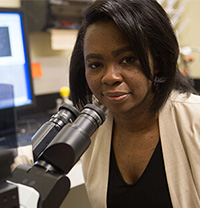 MAY E. ELEBEOBA, Ph.D., is currently an Associate Professor of Biomedical Engineering at the University of Houston’s Cullen College of Engineering and an Associate Affiliate Member of Houston Methodist Research Institute. She earned her Ph.D. degrees in Computer Engineering from North Carolina State University and prior to joining the University of Houston held an appointment as a Principal Member Technical Staff at Sandia National Laboratories in Albuquerque, NM. As director of the Multi-scale Immunobiology Design, Algorithms, and Simulation (MIDAS) Lab, Dr. May’s research focuses on the design of integrated quantitative and empirical platforms for the development of multi-scale, predictive models of biological and biomolecular systems with an emphasis on host-pathogen interactions, microbial communities, and genetic information processing. Since joining IEEE EMBS as a student member, Dr. May has organized and chaired workshops and special sessions, and served as a reviewer, associate editor and guest editor for topical areas such as information, communication theory and biology; systems biology; and, computational biology. She has also served on the IEEE EMBS Technical Committee on Computational Biology and the Physiome (CBaPTC) and IEEE EMBS Biomedical & Health Informatics (BHI) Technical Committee. Dr. May is a recipient of an NIH/NHLBI K25 Quantitative Research Career Development Award and her research has been supported by grants from the DoE, DTRA, NIH, and NSF. She has also recently served as a Program Director for the Systems and Synthetic Biology Cluster in the Division of Molecular and Cellular Biosciences within the NSF Biological Sciences Directorate.
MAY E. ELEBEOBA, Ph.D., is currently an Associate Professor of Biomedical Engineering at the University of Houston’s Cullen College of Engineering and an Associate Affiliate Member of Houston Methodist Research Institute. She earned her Ph.D. degrees in Computer Engineering from North Carolina State University and prior to joining the University of Houston held an appointment as a Principal Member Technical Staff at Sandia National Laboratories in Albuquerque, NM. As director of the Multi-scale Immunobiology Design, Algorithms, and Simulation (MIDAS) Lab, Dr. May’s research focuses on the design of integrated quantitative and empirical platforms for the development of multi-scale, predictive models of biological and biomolecular systems with an emphasis on host-pathogen interactions, microbial communities, and genetic information processing. Since joining IEEE EMBS as a student member, Dr. May has organized and chaired workshops and special sessions, and served as a reviewer, associate editor and guest editor for topical areas such as information, communication theory and biology; systems biology; and, computational biology. She has also served on the IEEE EMBS Technical Committee on Computational Biology and the Physiome (CBaPTC) and IEEE EMBS Biomedical & Health Informatics (BHI) Technical Committee. Dr. May is a recipient of an NIH/NHLBI K25 Quantitative Research Career Development Award and her research has been supported by grants from the DoE, DTRA, NIH, and NSF. She has also recently served as a Program Director for the Systems and Synthetic Biology Cluster in the Division of Molecular and Cellular Biosciences within the NSF Biological Sciences Directorate.
Position Statement: Attending my first IEEE conference as a student paper finalist, the EMBS conference was the first place I met researchers that used engineering to study and tame biological systems – it was exciting. It was at EMBC that I learned about systems biology and as a computer engineering graduate student in the late 1990’s, realizing that concepts from electrical circuits could be applied to molecular and cellular biology was pivotal. Since then, EMBS has been my professional home and I have served in many roles, including reviewer, workshop organizer, conference theme leader, guest editor and technical committee member. The IEEE EMBS bridges the engineering and biological disciplines in a way few organizations can achieve. However EMBS needs to continue to expand its professional influence and engage more researchers in fields such as molecular to physiological scale systems, synthetic biology, systems biology, and topics advancing bioengineering as well as biomedicine. As an AdCom member, I would contribute my diverse professional experiences in government and academia to help EMBS strengthen the society’s engagement in the biomolecular space. I would also help broaden the engagement of a diverse community of scholars across professional sectors, socioeconomic and geographic regions. As a student, I was excited to be part of this society because I believed I found a community that spoke my language. My goal is to help ensure that EMBS continues this legacy, and remains a society that speaks to and promotes engineers, scientists, students and professionals at the intersection of disciplines.
 JOHN CRISCIONE, MD, PH.D is a graduate of Purdue University (BS Applied Physics 1991) and The Johns Hopkins University (MD and PhD 1999) with additional post-doctoral training at UCSD (1999-2001). He started his academic career in 2001 at Texas A&M University as an Asst Prof of Biomedical Engineering and has progressed in rank to professor. In the laboratory, his work is both theoretical and practical. With regards to the theoretical foundations of mechanics, Dr. Criscione has developed novel constitutive frameworks that enable inverse solutions for materials that undergo finite deformations. With regards to engineering in practice, Dr. Criscione has invented and developed devices that assist the heart without contacting the blood. Such devices, when fully developed, are likely to be safer for short term use than current ventricular assist devices, and for biventricular patients, these devices are expected to be the only alternative to cardio-pulmonary bypass with extra-corporeal membrane oxygenation. In order to translate such technologies from the benchtop to the bedside, Dr. Criscione has been an active entrepreneur and founder of CorInnova Inc. He is an award winning teacher at Texas A&M and has been critically involved in the launch of new educational programs as Asst Dean for Graduate Programs in Engineering (2013-2015) and Vice Dean for Engineering Medicine(2019-2022), a new, engineering focused, medical school program.
JOHN CRISCIONE, MD, PH.D is a graduate of Purdue University (BS Applied Physics 1991) and The Johns Hopkins University (MD and PhD 1999) with additional post-doctoral training at UCSD (1999-2001). He started his academic career in 2001 at Texas A&M University as an Asst Prof of Biomedical Engineering and has progressed in rank to professor. In the laboratory, his work is both theoretical and practical. With regards to the theoretical foundations of mechanics, Dr. Criscione has developed novel constitutive frameworks that enable inverse solutions for materials that undergo finite deformations. With regards to engineering in practice, Dr. Criscione has invented and developed devices that assist the heart without contacting the blood. Such devices, when fully developed, are likely to be safer for short term use than current ventricular assist devices, and for biventricular patients, these devices are expected to be the only alternative to cardio-pulmonary bypass with extra-corporeal membrane oxygenation. In order to translate such technologies from the benchtop to the bedside, Dr. Criscione has been an active entrepreneur and founder of CorInnova Inc. He is an award winning teacher at Texas A&M and has been critically involved in the launch of new educational programs as Asst Dean for Graduate Programs in Engineering (2013-2015) and Vice Dean for Engineering Medicine(2019-2022), a new, engineering focused, medical school program.
Position Statement: Nomination to serve as AdCom North America Representative is a great honor, and if elected, I will devote my efforts and organizational skills towards growth, diversity, and excellence of EMBS. My involvement, itself, represents growth. Much of my professional activity in the past has been with ASAIO, BMES, SES, and ASME and have only recently joined EMBS. I joined because I think the next phase of healthcare will be defined by technology that is dominated by computational platforms and sensors, a key technical domain of EMBS. Moreover, an effective working relationship between clinical entities, industry, academia, and government will be necessary to expand healthcare access in North America and throughout the world, and a professional organization like EMBS is needed to enable such a relationship. Given my medical training, experience in regulatory affairs, and leadership in industry and academia, I have a unique point of view that enables me to relate to all of the components of a complex healthcare system. Finally, in all matters related to human health and animal welfare, my focus is on total quality management with the explicit realization that quality attenuates down any organizational structure. Hence, to enhance the overall quality of EMBS, I will need to serve with exceptionally high quality at the AdCom level.
FOR LATIN AMERICAN REPRESENTATIVE
For a Three-Year Term 1 January 2023 – 31 December 2025
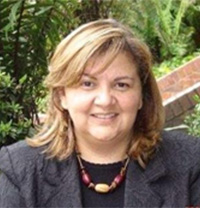 MARTHA LUCIA ZEQUERA DIAZ is Full Professor in the Electronics Department of the Faculty of Engineering, at the Pontificia Universidad Javeriana, Bogotá, Colombia since 2010. She has been working as a researcher for 24 years in the Bioengineering Research Group “BASPI”, oriented to bio signal and image processing analysis. Her current research interests include the integration of emerging technologies and the analysis of information with the use of deep learning techniques for the prediction of neurological diseases in elderly patients with diabetes, implementing telemedicine to contribute to the digital transformation of the current health system. She has focused on promote quality promotion on in education and research in Biomedical Engineering and Bioengineering, specifically with the training of young engineers from different disciplines to sensitize them to the importance of contributing to the digital transformation in health care services. She has been linked as a volunteer to the three most relevant scientific societies in Biomedical Engineering at a global level to establish alliances and joint actions for academic training, research, and innovation in the new generations. She has been able to establish alliances between the e-health industry and the academia contributing to new job opportunities for young entrepreneurs. Due to her leadership capacity, she is the first Latin American woman to hold a position in the International Federation of Medical and Biological Engineering as Administrative Council Member, the founder of the IBM, GLOBAL UNIVERSITY PROGRAMS Latin America Universities Alliance network and finally Founder mentor of IFMBE Recent Graduates and Students Working Group.
MARTHA LUCIA ZEQUERA DIAZ is Full Professor in the Electronics Department of the Faculty of Engineering, at the Pontificia Universidad Javeriana, Bogotá, Colombia since 2010. She has been working as a researcher for 24 years in the Bioengineering Research Group “BASPI”, oriented to bio signal and image processing analysis. Her current research interests include the integration of emerging technologies and the analysis of information with the use of deep learning techniques for the prediction of neurological diseases in elderly patients with diabetes, implementing telemedicine to contribute to the digital transformation of the current health system. She has focused on promote quality promotion on in education and research in Biomedical Engineering and Bioengineering, specifically with the training of young engineers from different disciplines to sensitize them to the importance of contributing to the digital transformation in health care services. She has been linked as a volunteer to the three most relevant scientific societies in Biomedical Engineering at a global level to establish alliances and joint actions for academic training, research, and innovation in the new generations. She has been able to establish alliances between the e-health industry and the academia contributing to new job opportunities for young entrepreneurs. Due to her leadership capacity, she is the first Latin American woman to hold a position in the International Federation of Medical and Biological Engineering as Administrative Council Member, the founder of the IBM, GLOBAL UNIVERSITY PROGRAMS Latin America Universities Alliance network and finally Founder mentor of IFMBE Recent Graduates and Students Working Group.
Position Statement: During the latest 15 years of my academic and research life, I have been involved as a member of the IEEE/EMBS and IFMBE/CORAL international societies, promoting Biomedical Engineering and Bioengineering in Latin America, USA, Asia and Europe. I collaborated and contributed to several special sessions organized by the EMBS Education Committee in collaboration with IFMBE at the annual international EMBC conferences and World Congresses. I was involved in the organization of several EMBS and IFMBE Co-Sponsored Conferences in Latin America, CLAIB. I would like to keep working on maintaining and strengthening the existing networking with the EMBS Latin American members, students and young professionals and the IFMBE members from other continents to promote Medical and Biological Engineering, Biomedical Engineering and Bioengineering in Education and exploring new opportunities of collaboration. I would like to enhance collaboration between national and transnational societies, industry and government engaged in BME, exploring collaboration on research of emerging technologies, health care or other activities which address special needs of the Latin American regions, by organizing joint sessions or forums. I also would like to promote new initiatives in collaboration with industry to offer new global jobs opportunities for the new generations in digital transformation in healthcare services. I would like to promote the collaboration between professionals and students from Medicine, Nursing, Computer Science, Medical Physics, and Bioengineering areas by supporting the organization of joint summer schools on emerging technologies for healthcare with the support of IFMBE, IEEE/EMBS, and CORAL.
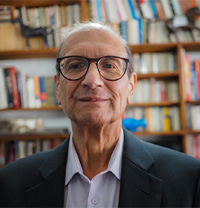 JOAQUIN AZPIROZ LEEHAN obtained his BSc and M Sc in Biomedical Engineering from Universidad Autónoma Metropolitana (UAM) in Mexico City in 1980 and 1986. He earned his Ph. D. in Biomedical Engineering from the Université de Technologie de Compiègne, France in 1992. He is currently Professor of Biomedical Engineering and Scientific Coordinator at CI3M, a National Laboratory for Medical Imaging and instrumentation at UAM.
JOAQUIN AZPIROZ LEEHAN obtained his BSc and M Sc in Biomedical Engineering from Universidad Autónoma Metropolitana (UAM) in Mexico City in 1980 and 1986. He earned his Ph. D. in Biomedical Engineering from the Université de Technologie de Compiègne, France in 1992. He is currently Professor of Biomedical Engineering and Scientific Coordinator at CI3M, a National Laboratory for Medical Imaging and instrumentation at UAM.
- He has participated at 123 conferences
- Has 63 publications
- Has written two books on medical imaging and image processing, and 5 book chapters.
- His main research interests have been:
• Hardware-based processing of biomedical images and signals
• Design and development of medical devices
• BME Education - He is an IEEE Senior Member since 2007 and has been member of the IEEE_EMBS for over 30years
- He has been Associate Editor at IEEE-TBME (2001-2007)
- Associate editor at IEEE TITB
- AdCom Region 9 representative (2002-2005)
- Program Chair of the 25th annual International conference of the IEEE Engineering in Medicine and Biology Society at Cancún, Mexico, ISBN: 0-7803-7790-7, 3875 páginas, 2003 Program co-chair of the 43rd annual International conference of the IEEE Engineering in Medicine and Biology (virtual) 2020
DOI: 10.1109/EMBC44109.2020.9175603 - Program Chair for 43rd Annual International Conference of the IEEE Engineering in Medicine &Biology Society (EMBC) (virtual, 2021)
DOI: 10.1109/EMBC46164.2021 - He is currently the EMBS Region 9 representative for 2022, (appointed by the president of the EMBS for one year).
Position Statement: I have witnessed an exponential growth in the number of BME programs in Latin America, from two when I started my studies to today, when we have almost 150 programs in the region. The profession has become very successful in hospitals and other health care institutions, in sales and maintenance of medical devices. It has been less successful in the fields of Research and Development and the Design and Development of medical devices. I have been interested in BME education for a long time. Together with several colleagues we have hosted 3 meetings on curriculum design (2 national, 1 international) and have studied the aims and results of these programs. Apart from the Clinical engineering successes, I believe that we need to strengthen the DESIGN aspects of all the programs. Even though the scientific output from the university faculties is adequate, few efforts are undertaken to bring these results to the patient’s bedside. I think this has to be discussed within the region’s institutions. It has been an honor to serve the IEEE_EMBS and if elected, I will dedicate my time and effort to help the R9 chapters in any capacity I can in order to strengthen the capabilities of their members and communities, while also helping them to achieve their desired aims.
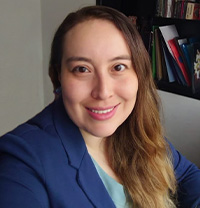 LIZETH VEGA MEDINA received her B.Sc. degree in Mechatronics Engineering from the Universidad Militar Nueva Granada in 2013, her graduate diploma in Bioengineering from Universidad Distrital Francisco José de Caldas and her M.Sc. in Bioengineering from the Universidad Antonio Nariño in Bogotá, Colombia. She is currently a full professor in the Bioengineering program at the Universidad El Bosque. Her research experience is mainly in virtual reality for health and medical and veterinary simulation and rehabilitation systems.
LIZETH VEGA MEDINA received her B.Sc. degree in Mechatronics Engineering from the Universidad Militar Nueva Granada in 2013, her graduate diploma in Bioengineering from Universidad Distrital Francisco José de Caldas and her M.Sc. in Bioengineering from the Universidad Antonio Nariño in Bogotá, Colombia. She is currently a full professor in the Bioengineering program at the Universidad El Bosque. Her research experience is mainly in virtual reality for health and medical and veterinary simulation and rehabilitation systems.
She has been teaching courses in computational design, 3D printing, biomaterials, and engineering design for bioengineering applications. She is very interested in pursuing a research career in 3D bioprinting, biofabrication and regenerative medicine. She has been a member of IEEE since 2009 and has served as a volunteer since she was a student and then a professional member.
Her last volunteer positions have been IEEE EMBS WIE Co-Chair (2022), IEEE EMBS YP R9 Representative (2021), IEEE EMBS ISC R9 Committee Chair (2020 – 2021), IEEE VoLT program Graduate (2019), Colombia Section EMBS Chapter Chair (2019 – 2021), Universidad El Bosque EMBS Student Chapter Advisor (2018 – Today), Colombia Section EMBS Chapter Vice-Chair (2017 – 2018), Colombia Section Membership Development Chair (2015 – 2016).
Position Statement: Representing the Latin American region at the EMBS AdCom would be an honour and an enriched experience for me. Since 2019, as the EMBS Colombia Chapter Chair, I have had the opportunity to work with an excellent and committed group of volunteers. Together we have been serving EMBS professionals, and student chapters from the Latin American community that united have helped to grow our presence and propose and develop strong initiatives not only for our region but for our society.
A key to overcoming this situation is to pursue a synergistic collaboration between clinicians and engineers to develop solutions to the mentioned problems. If given the opportunity to serve as an AdCom member representing Latin America, I will work hard to help EMBS become a visible and active element of change by supporting local chapters in coordination with relevant organizations in Latin America related to bioengineering. In particular, I will dedicate my efforts to (1) support member initiatives for increasing membership, (2) foster the dissemination of Latin American bioengineering developments in conferences, publications, websites and social media, (3) seek support from EMBS to promote relevant activities of the Latin American bioengineering community, and (4) strengthen the network of EMBS R9 volunteers and promote the participation of Latin American representatives in all relevant EMBS global initiatives.
MIDDLE EAST AND AFRICA REPRESENTATIVE
For a Three-Year Term 1 January 2023 – 31 December 2025
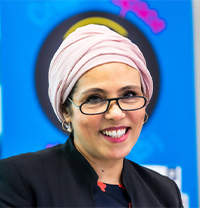 HALIMA BENSAMAIL received her PhD from the University of Pierre & Marie Currie in France and spend three years at the University of Washington, Seattle and Fred Hutchinson Cancer Research Center. She was a scientist position at the Data Theory Group at the University of Leiden, the Netherlands.
HALIMA BENSAMAIL received her PhD from the University of Pierre & Marie Currie in France and spend three years at the University of Washington, Seattle and Fred Hutchinson Cancer Research Center. She was a scientist position at the Data Theory Group at the University of Leiden, the Netherlands.
Halima was an assistant and associate professor at the university of Tennessee. In 2006, she was appointed as an associate professor at Virginia Medical School and was a key member for building the Master of Public Health program as an associate professor of bioinformatics and biostatistics.
Halima is now a principal scientist at Qatar Computing Research Institute and is leading the Bioinformatics and Computational Biology group. She is a joint Full Professor at the College of Computer and Science Engineering, HBKU. Halima has expertise in statistical machine learning, artificial intelligence and modeling particularly in all kind of health and life sciences field and is recently focusing on creating preventive and diagnosis tool in precision medicine. Halima has published more than 110 peer reviewed papers in high impact journal such as Nature Communications, Nucleic Acids Research, Genome Research, Bioinformatics, Briefings in Bioinformatics and Journal of American statistical Association to name a few. She mentored several graduate and undergraduate students and taught several courses. She received several awards such as the “International Federation of Classification Society”, “Qatar Foundation Computing Research” and “Turkish Statistical Machine Learning Complexity” awards. Halima has been PI on several successful research grants. In 2021 she has been part of a $2 millions newly created center awarded by USDA grant agency to the obesity center in Texas Tech. She also served as a reviewer for the National Institute of Health (NIH) and National Sciences Foundation (NSF). Halima is a board member of Artificial Intelligence and Quantum Technology Foundation, Switzerland (AIQT) and associate editor for several Journals such as Frontiers Data Science and Frontiers n Big Data.
Position Statement: As a member of the AdCom, I will be dedicated to cultivating and enhancing a varied, inclusive, and egalitarian culture, and I will do my best to represent the southern hemisphere, particularly North Africa and the Middle East. I believe I am qualified and the best person to represent this region because I am originally from Morocco and studied there until I received my bachelor’s degree. After working in research and academia in Europe and America, I was invited to move to the Middle East to help create a national institute for research in computing and was instrumental in founding the first center of Computational Biology in Qatar Computing Research Institute that was predominantly male-dominated, and I helped to put the Institute on the map within the Middle East and abroad by outlining the Institute’s direction of the biomedical engineer direction and component, by hiring and supervising PhD students and Postdocs and scientists and putting pillar for Precision medicine within Qatar Foundation and Middle East.
My mission will be to foster technological innovation and excellence to benefit humanity and southern part of the globe which requires the talents and perspectives of people with different personal, cultural, and disciplinary backgrounds. I will be committed to advancing diversity in the technical profession, and to promoting an inclusive and equitable culture in its activities and programs that welcomes, engages and rewards those who contribute to the field without regard to race, religion, gender, disability, age, national origin, sexual orientation, gender identity, or gender expression.
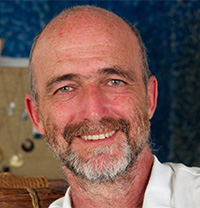 MARIO FORJAZ SECCA born in Mozambique, I went to England to train as a pure physicist. I then became a Biophysics Professor and a Medical Physicist, and later a Biomedical Engineer, creating one of the first two Biomedical Engineering Undergraduate/Graduate programs in Portugal. I became President of the Portuguese Society of Biomedical Engineering and in 2006 became very involved with the International Federation of Medical and Biological Engineering, where I was Chairman of the Societies Committee (2009-2012), member of the Administrative Council (2012-2018), Past-Chair of the Council of Societies (2012-2015), and Chairman of the Working Group on Developing Countries (2010-2018). In Portugal, between 1986 and 2016, I also worked part-time in a private MRI clinic, for 28 years, and a public hospital for 5 years. My work in Neuroradiology was acknowledged by the attribution of the biennial Egas Moniz Prize of the Portuguese Society of Neuroradiology for my career contribution to Portuguese Neuroradiology (attributed for the first time to a non Neuroradiologist).
MARIO FORJAZ SECCA born in Mozambique, I went to England to train as a pure physicist. I then became a Biophysics Professor and a Medical Physicist, and later a Biomedical Engineer, creating one of the first two Biomedical Engineering Undergraduate/Graduate programs in Portugal. I became President of the Portuguese Society of Biomedical Engineering and in 2006 became very involved with the International Federation of Medical and Biological Engineering, where I was Chairman of the Societies Committee (2009-2012), member of the Administrative Council (2012-2018), Past-Chair of the Council of Societies (2012-2015), and Chairman of the Working Group on Developing Countries (2010-2018). In Portugal, between 1986 and 2016, I also worked part-time in a private MRI clinic, for 28 years, and a public hospital for 5 years. My work in Neuroradiology was acknowledged by the attribution of the biennial Egas Moniz Prize of the Portuguese Society of Neuroradiology for my career contribution to Portuguese Neuroradiology (attributed for the first time to a non Neuroradiologist).
In 2016 I returned to Mozambique to give my contribution in the Biomedical Engineering area to the country of my birth. I created a consulting company here and have worked for three years in the Central Hospital of Maputo and for the past two years as a consultant on Medical Devices for WHO, in particular on a Medical Device online database, on the Universal Health Coverage Compendium and a survey on Medical Imaging services in Africa in general and Eswatini in particular.
Position Statement: I was born and brought up in Mozambique, before going to England to the University. Having created one of the first two Biomedical Engineering Undergraduate/Graduate programs in Portugal and becoming the President of the Portuguese Society of Biomedical Engineering, I was then very involved with the International Federation of Medical and Biological Engineering, acting as Chairman of the Societies Committee (2009-2012), member of the Administrative Council (2012-2018), Past-Chair of the Council of Societies (2012-2015), and Chairman of the Working Group on Developing Countries (WGDC) (2010-2018). During my period in the WGDC I was heavily involved in the creation of the African Activities Working Group, which grouped many Biomedical Engineering colleagues from African Societies which later joined as members of IFMBE.
In 2016 I returned to my country of birth, Mozambique, hoping to continue to contribute to the development and strengthening of Biomedical Engineering in Mozambique, in particular, and Africa, overall, but now as a local resident, with a deeper knowledge of the local conditions.
Presenting myself as a candidate to be the Middle East/Africa Geographic Representative IEEE EMB Society, means that I am very passionate and I strongly believe in the importance of strengthening and developing the field of Biomedical Engineering in Africa and the Middle East and to continue defending its extreme importance in the betterment and optimal functioning of the health services in the continent through the use of medical technologies.
STUDENT REPRESENTATIVE
For a Three-Year Term 1 January 2023 – 31 December 2024
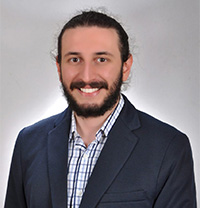 ANDRE L. CAKICI is an M.Sc. student at the Department of Medical Engineering, Friedrich-Alexander Universität Erlangen-Nürnberg (FAU). He received his B.Sc. from Bahçeşehir University in Istanbul, Turkey, with an honors degree in biomedical engineering, and a minor in engineering management. He was granted a scholarship within National Young Researcher Career Development Program of the Scientific and Technological Research Council of Turkey for his work as an undergraduate assistant in a research entitled “Time Reversal Based Photoacoustic Medical Imaging”. He is a member of the Chair of Neuromuscular Physiology and Neural Interfacing at FAU.
ANDRE L. CAKICI is an M.Sc. student at the Department of Medical Engineering, Friedrich-Alexander Universität Erlangen-Nürnberg (FAU). He received his B.Sc. from Bahçeşehir University in Istanbul, Turkey, with an honors degree in biomedical engineering, and a minor in engineering management. He was granted a scholarship within National Young Researcher Career Development Program of the Scientific and Technological Research Council of Turkey for his work as an undergraduate assistant in a research entitled “Time Reversal Based Photoacoustic Medical Imaging”. He is a member of the Chair of Neuromuscular Physiology and Neural Interfacing at FAU.
He has been a member and a volunteer in EMBS since 2015, founded an EMB student chapter at his alma mater, elected student representative in EMBS Turkey Chapter in the following year. He is currently serving as the interim EMBS AdCom student representative, appointed by EMBS President for 2022. Throughout his volunteer roles, he started the conference series called “BioInnovation” in his student chapter; received the IEEE Darrel Chong Student Activity Award from IEEE MGA Student Activities Committee. He was the coordinator of “EMBS Turkey Conference”, which was organized for the first time in 2016, still successfully organized annually with the name “EMBCON”. He chaired the conference the following year, improving its impact by adding student speakers. He was granted a fellowship to attend the 16th “International Summer School on Bio-X”, which was co-sponsored by EMBS. He nominated Turkey Chapter for the activities he organized as a student representative, receiving Outstanding Chapter Award from EMBS in 2018.
Position Statement: I have hands on volunteering experience in EMBS as a student member, a club chair, and a section representative. Over the years and through my interim term as the AdCom student representative, this gave me an opportunity to observe the essential needs of student members of EMBS, the ones I felt personally or in the communities I led. With raising these needs during my elected term in the AdCom agenda as my goal, my efforts will include but will not be limited to the following endeavors:
- Forming a team of regional student representatives, so that it is easier for the AdCom student representative to get in touch with the regions and address their needs, receive feedback, localize global initiatives; also to ensure a consistent stream of future candidates for the AdCom student representative role, who are already experienced and aware of the ongoing challenges to work on.
- Urging young professional members to come together with student members and share their experience, work with the young professional representative to organize joint events; for example, a measurable goal would be to increase the young professional members who join the Mentorship Program ,overseen by Student Activities Committee (SAC), as mentors.
- Setting it up communication channels for student chapters; continue offering student representative office hours for consultation and feedback, establish a platform where they can talk to other student chapters, share ideas, promote events and hopefully decide on organizing joint events together.
I am very excited for this opportunity of cultivating and supporting the future leaders of the biomedical engineering community all over the world.
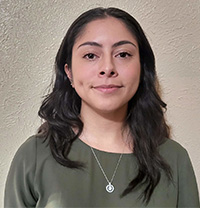 ESPERANZA VASQUEZ is a first-year Biomedical Engineering Ph.D student at the University of Houston with a B.S. in Applied Mathematics and a B.S. in Biomedical Engineering. I am currently working in the Akay Lab. During my undergrad, I have been fortunate to participate in both industry and research internships. At QuVa Pharma, I learned about the overall manufacturing process from the production to the shipment of pharmaceuticals. I was trained in current documentation and Good Manufacturing Practices. Additionally, I was introduced to several skills such as preparation of safety data sheets, role matrices, and management. My research internship was through the Rice University Summer Cardiovascular Internship Research Program, funded by the American Heart Association. My research consisted of the fabrication of a patch with seeded cells designed to initiate wound healing through IL-10. Currently in my Ph.D. research, I apply signal analysis to understand the brain’s response to pain. My primary goal is to detect biomarkers for pain based on signal analysis, understand the function of several brain regions when undergoing pain, and apply neuromodulation to the brain.
ESPERANZA VASQUEZ is a first-year Biomedical Engineering Ph.D student at the University of Houston with a B.S. in Applied Mathematics and a B.S. in Biomedical Engineering. I am currently working in the Akay Lab. During my undergrad, I have been fortunate to participate in both industry and research internships. At QuVa Pharma, I learned about the overall manufacturing process from the production to the shipment of pharmaceuticals. I was trained in current documentation and Good Manufacturing Practices. Additionally, I was introduced to several skills such as preparation of safety data sheets, role matrices, and management. My research internship was through the Rice University Summer Cardiovascular Internship Research Program, funded by the American Heart Association. My research consisted of the fabrication of a patch with seeded cells designed to initiate wound healing through IL-10. Currently in my Ph.D. research, I apply signal analysis to understand the brain’s response to pain. My primary goal is to detect biomarkers for pain based on signal analysis, understand the function of several brain regions when undergoing pain, and apply neuromodulation to the brain.
Position Statement: My desire to serve as a student representative in the Administrative Committee (AdCom) stems from a mission to expand IEEE EMBS to other areas (e.g., Latin America, Africa) where the progression of both medicine and engineering are lacking. As a first-year Ph.D. student at the University of Houston, I work in the Akay lab. Currently, I focus on pain research, which encompasses biomedical signal processing and analysis. The expansion of such an important and international society can benefit countries by having accessible healthcare and healthcare or engineering funding. In my family, I am a first-generation, Hispanic female college graduate and the first to pursue a Ph.D. The goal and mission to expand IEEE EMBS to other countries that lack funding and access to healthcare and engineering are personally very important to me. I am keen to learn and do more to promote the emerging technologies in medicine in developing countries and economically disadvantaged communities. We must make sure that these technologies are affordable and accessible to all. Many people who live in Mexico, other countries in Latin America, or any other third-world country, are misinformed about health, nutrition, and the types of treatments that are available. The expansion of IEEE EMBS could also benefit these countries in spreading knowledge of healthcare and engineering, allowing these countries to improve the field of medicine.
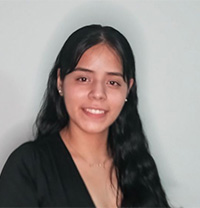 NICOLE NAOMI CABALLERO CANCHANYA is currently a fourth year student of Biomedical Engineering at the Universidad Nacional Mayor de San Marcos (UNMSM), Peru. She has been TOM Fellow 2021 and alumni of the Seeds for the Future Program of Huawei 2021, has participated in initiatives such as Serendipity, Science Clubs among others. She has been a member and volunteer of the EMBS and IEEE since 2021, served as student chapter chair at his alma mater in 2021, in which he was recognized as Exemplary Chapter of the Peru Section, and then as ambassador and auxiliary member in the EMBS Peru Chapter in 2022. She has been Ambassador of IEEEXtreme 15.0 and the R9 Student Branch Regional Meeting 2021. She is currently president of the IEEE UNMSM Student Branch, Information Contact of XXIX INTERCON 2022, auxiliary member of the Education Society Peru Chapter, part of the administrative team of IEEE Peru Section and volunteer in NoticIEEEro R9 magazine. She enjoys contributing to society. She is looking forward to working with students and professionals in this field from all over the world.
NICOLE NAOMI CABALLERO CANCHANYA is currently a fourth year student of Biomedical Engineering at the Universidad Nacional Mayor de San Marcos (UNMSM), Peru. She has been TOM Fellow 2021 and alumni of the Seeds for the Future Program of Huawei 2021, has participated in initiatives such as Serendipity, Science Clubs among others. She has been a member and volunteer of the EMBS and IEEE since 2021, served as student chapter chair at his alma mater in 2021, in which he was recognized as Exemplary Chapter of the Peru Section, and then as ambassador and auxiliary member in the EMBS Peru Chapter in 2022. She has been Ambassador of IEEEXtreme 15.0 and the R9 Student Branch Regional Meeting 2021. She is currently president of the IEEE UNMSM Student Branch, Information Contact of XXIX INTERCON 2022, auxiliary member of the Education Society Peru Chapter, part of the administrative team of IEEE Peru Section and volunteer in NoticIEEEro R9 magazine. She enjoys contributing to society. She is looking forward to working with students and professionals in this field from all over the world.
Position Statement: My goal as the EMBS student representative is to enhance the membership experience for student/graduate members and to foster the development of student chapters. I want to help EMBS design initiatives that can better serve the needs of members. I am interested in developing and promoting opportunities such asinternational internships, travel grants for EMBS conferences, mentoring, scholarships for outstanding student members, scholarships for exchange or graduate studies, funds for chapter and project creation and more benefits. I wish to create a Women in Biomedical Engineering (WIBE) committee with its own image and organization at all levels as other societies have their WIP (Women in Power) or WICE (Women in Communications) committees, as well as promote competitions and conferences focused on women’s participation in Biomedical Engineering. But above all I want to learn more about this society that has given me great opportunities and to share the knowledge I have to contribute to this beautiful community and encourage more people to be part of it.
YOUNG PROFESSIONALS REPRESENTATIVE
For a Three-Year Term 1 January 2023 – 31 December 2024
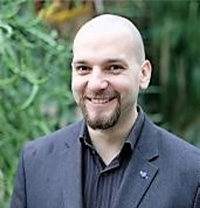 PETER MAROTI graduated as a medical doctor in 2015, and earned his Ph.D. degree with „excellent” result in 2019, at the University of Pecs, Medical School (UPMS). In the same year, he has obtained his specialization on the field of preventive medicine and epidemiology. His research topic focuses on the additive manufacturing of biomedical devices, with a strong interest on the mechanical behavior and structural characteristics of 3D printed polymers and composites. The researcher was the founder of the UPMS Medical Simulation Education Centre, as well as the 3D Printing and Visualization Centre. Currently, he is working as a postdoctoral researcher and deputy director in both departments, where he is responsible for RDI project management and the coordination of his research team. He is also actively mentoring several student researchers and six PhD candidates. Formerly, he was one of the main organizers of the International Interdisciplinary 3D Conference series. Dr. Maroti also attended on the prestigious “International Summer School on BioX: Biocomplexity, Biodesign, Bioinnovation, Biomanufacturing and Bioentrepreneurship” event. In 2021, he won an international Erasmus+ KA 2 grant (Virtual Biomedical and STEM/STEAM Education) as a leading researcher, also he won numerous national level excellence grants (National Scholarship for Young Talents 2020; New National Excellence Program 2019), and awarded by the Rector’s Award and Dean’s Award for his professional work at the University of Pecs. Dr. Maroti is among the founders of the first international Biomedical Engineering MSc program in Hungary, with the professional supervision and support of Prof. Dr. Metin Akay.
PETER MAROTI graduated as a medical doctor in 2015, and earned his Ph.D. degree with „excellent” result in 2019, at the University of Pecs, Medical School (UPMS). In the same year, he has obtained his specialization on the field of preventive medicine and epidemiology. His research topic focuses on the additive manufacturing of biomedical devices, with a strong interest on the mechanical behavior and structural characteristics of 3D printed polymers and composites. The researcher was the founder of the UPMS Medical Simulation Education Centre, as well as the 3D Printing and Visualization Centre. Currently, he is working as a postdoctoral researcher and deputy director in both departments, where he is responsible for RDI project management and the coordination of his research team. He is also actively mentoring several student researchers and six PhD candidates. Formerly, he was one of the main organizers of the International Interdisciplinary 3D Conference series. Dr. Maroti also attended on the prestigious “International Summer School on BioX: Biocomplexity, Biodesign, Bioinnovation, Biomanufacturing and Bioentrepreneurship” event. In 2021, he won an international Erasmus+ KA 2 grant (Virtual Biomedical and STEM/STEAM Education) as a leading researcher, also he won numerous national level excellence grants (National Scholarship for Young Talents 2020; New National Excellence Program 2019), and awarded by the Rector’s Award and Dean’s Award for his professional work at the University of Pecs. Dr. Maroti is among the founders of the first international Biomedical Engineering MSc program in Hungary, with the professional supervision and support of Prof. Dr. Metin Akay.
Position Statement: IEEE EMBS is the leading scientific and professional community of biomedical engineers and related disciplines worldwide. It not only serves as a global inter- and multidisciplinary platform for students, researchers and other professionals, but also represents important values such as integrity, inclusion and diversity. Accordingly, as a candidate for the honorific “Young Professional Representative” position, I would like to proactively take part in the popularization of IEEE EMBS, with a special attention to young researchers and the wider publicity, making biomedical science more available and visible for everyone. Also, it would have aimed to further strengthen the local – national, regional level – presence of the Society. To achieve this goal, thematic workshops, social events could be organized, involving the partner academic institutes.
As a possible representative, I would like to put my effort into further enrich and extend international relationships and collaborations, as well as to facilitate the involvement of industrial stakeholders into actual research projects.
With almost 8 years of experience in organizing scientific events, managing complex RDI projects and leading interdisciplinary research teams, I strongly believe that I could effectively contribute to the everyday work of IEEE EMBS, and if I can be honored with the trust of the Election Committee, I will serve the Society with hard work and humility.
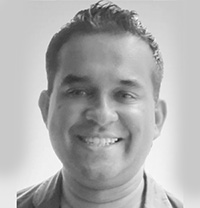 DHRUV SESHADRI received his B.S. in polymers science and engineering in 2014, M.S., and PhD degrees in biomedical engineering in 2018 and 2022 respectively from Case Western Reserve University in Cleveland, Ohio. As a research engineer during his PhD at the Louis Stokes Cleveland Veterans Affairs Medical Center from 2019-2021, Dhruv developed a wearable electronic device for chronic wound healing, spanning innovations in soft-flexible materials for electrodes and wound dressings, and translated this technology to large animal models in preparation for clinical testing on patients. Additionally, Dhruv led clinical trials with the Heart and Vascular Institute at Cleveland Clinic to assess the efficacy of FDA-cleared wearable wrist-monitors to monitor atrial fibrillation and blood pressure on patients following cardiac surgery. Dhruv has received funding from various governmental organizations including the Department of Energy for summer internships at Lawrence Berkeley National Laboratory in 2012 and 2013, the National Science Foundation for a summer internship at CEA-Leti in Grenoble, France in 2014, and the French government for an internship at the University Hospitals in Grenoble, France in 2018. His research involves the development, validation, and translation of wearable technology, bioelectronic devices, and digital therapeutics targeting human health and performance. This research has been disseminated in journals such as Npj Digital Medicine, Circulation, and IEEE and reported in news outlets such as CNN, Forbes, Fortune, Wired UK, and Nature Outlook. Dhruv has received grants from the Department of Defense (AFWERX program) and National Science Foundation for commercializing wearable technology.
DHRUV SESHADRI received his B.S. in polymers science and engineering in 2014, M.S., and PhD degrees in biomedical engineering in 2018 and 2022 respectively from Case Western Reserve University in Cleveland, Ohio. As a research engineer during his PhD at the Louis Stokes Cleveland Veterans Affairs Medical Center from 2019-2021, Dhruv developed a wearable electronic device for chronic wound healing, spanning innovations in soft-flexible materials for electrodes and wound dressings, and translated this technology to large animal models in preparation for clinical testing on patients. Additionally, Dhruv led clinical trials with the Heart and Vascular Institute at Cleveland Clinic to assess the efficacy of FDA-cleared wearable wrist-monitors to monitor atrial fibrillation and blood pressure on patients following cardiac surgery. Dhruv has received funding from various governmental organizations including the Department of Energy for summer internships at Lawrence Berkeley National Laboratory in 2012 and 2013, the National Science Foundation for a summer internship at CEA-Leti in Grenoble, France in 2014, and the French government for an internship at the University Hospitals in Grenoble, France in 2018. His research involves the development, validation, and translation of wearable technology, bioelectronic devices, and digital therapeutics targeting human health and performance. This research has been disseminated in journals such as Npj Digital Medicine, Circulation, and IEEE and reported in news outlets such as CNN, Forbes, Fortune, Wired UK, and Nature Outlook. Dhruv has received grants from the Department of Defense (AFWERX program) and National Science Foundation for commercializing wearable technology.
Position Statement: Dr. Seshadri is a translationally driven biomedical engineer focusing on the development, validation, and commercialization of wearable technology and bioelectronic devices. Dr. Seshadri’s career vision is to deploy wearable technology in underrepresented communities and lower income countries where access to medical facilities and ICU-quality vitals monitoring is lacking and needed. Specifically, his interests are in the applications of sensors for pediatric health, maternal monitoring, and digital therapeutics. Dr. Seshadri’s passion in mentorship and teaching over the course of his career has resulted in working with> 20 undergraduate and graduate students in biomedical and electrical engineering, nursing, biology, and medicine. Dr. Seshadri has a wide collaborative network, spanning 3 continents and has published >50 manuscripts and conference papers, some of which have been referenced in leading media sources such as CNN, Fortune, and Forbes. Recently, Dr. Seshadri was selected to the IEEE EMBS Student Mentoring Program, where he will be mentoring students on careers in engineering and medicine.
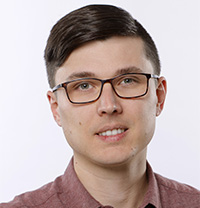 NICHOLAI SPICHER is a computer scientist (B.Sc. 2011, M.Sc. 2014) and received a Ph.D. (2020) from Duisburg-Essen University (Germany) for his research conducted at the Erwin L. Hahn Institute for Magnetic Resonance Imaging. In 2020, he moved to the Peter L. Reichertz Institute for Medical Informatics of TU Braunschweig and Hannover Medical School as postdoc and lecturer. Since 2022, he leads a junior research group on biosignal analysis at the University Medical Center Göttingen. He has been a member of the IEEE since 2020. He serves as an appointed member of the Germany Executive Committee responsible for university relationships and treasurer of EMB German chapter. Moreover, he is a graduate of the IEEE Volunteer Leadership Training Program (2021). Next to his involvement at the IEEE, he is deputy speaker of the technical committee “Biosignals” of the German Society for Biomedical Engineering (DGBMT). In 2021, he received the “Johann Peter Süßmilch-Medal” of the German Association for Medical Informatics, Biometry and Epidemiology (GMDS) for one of his publications in the IEEE Journal of Biomedical and Health Informatics. His research interest lies in signal processing with a focus on applications from biomedical engineering and medical informatics.
NICHOLAI SPICHER is a computer scientist (B.Sc. 2011, M.Sc. 2014) and received a Ph.D. (2020) from Duisburg-Essen University (Germany) for his research conducted at the Erwin L. Hahn Institute for Magnetic Resonance Imaging. In 2020, he moved to the Peter L. Reichertz Institute for Medical Informatics of TU Braunschweig and Hannover Medical School as postdoc and lecturer. Since 2022, he leads a junior research group on biosignal analysis at the University Medical Center Göttingen. He has been a member of the IEEE since 2020. He serves as an appointed member of the Germany Executive Committee responsible for university relationships and treasurer of EMB German chapter. Moreover, he is a graduate of the IEEE Volunteer Leadership Training Program (2021). Next to his involvement at the IEEE, he is deputy speaker of the technical committee “Biosignals” of the German Society for Biomedical Engineering (DGBMT). In 2021, he received the “Johann Peter Süßmilch-Medal” of the German Association for Medical Informatics, Biometry and Epidemiology (GMDS) for one of his publications in the IEEE Journal of Biomedical and Health Informatics. His research interest lies in signal processing with a focus on applications from biomedical engineering and medical informatics.
Position Statement: Joining the IEEE in 2020 was one of the best choices I made in my academic career. Very quickly I became involved in various activities on different levels, e.g. by being appointed as member of the Germany Section Executive Committee responsible for university relationships or by becoming the treasures of the EMB Society Chapter (Germany Section). In 2021, I was lucky to join the IEEE Volunteer Leadership Training Program (VoLT).
While these experiences were great, they were not directly related to my field of research. In my daily work in the field of biosignal processing I am in constant contact with the EMB and its activities, be it the journals, conferences, or workshops. I would love to become a member of the Administrative Committee to be able to give something back by helping to shape the future of our society. Due to the current pandemic situation, young researchers are confronted with various new challenges. As an academically young researcher, I am able to reflect their views and needs and to use them as a basis for strategic decisions.
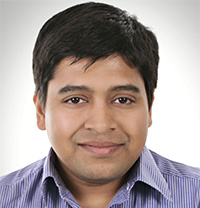 SUBMAHOY MANDAL is currently an Assistant Professor at the Indian Institute of Technology (IIT) Kharagpur and PI of the Medical Imaging and Theragnostics Lab. Prior to joining IIT, he was a Clinical Engineer with Maxer Endoscopy (2019-2022), and Research Scientist in Molecular Imaging at the German Cancer Research Center (DKFZ), Heidelberg (2017-2019). He completed his Ph.D. in Medical Imaging at the TU München and Helmholtz Zentrum München. He received his MS (by research) from IIT Kharagpur, and B.E. in Biomedical Engineering from Manipal Academy of Higher Education, India. He has rich exposure to the industry through his stints at Maxer (Erbe), Philips Healthcare and GE Global Research. His research interests are medical imaging, biomedical signal and image processing (with a focus on magnetic resonance and photoacoustic imaging), augmented reality in medicine, and point-of-care healthcare.
SUBMAHOY MANDAL is currently an Assistant Professor at the Indian Institute of Technology (IIT) Kharagpur and PI of the Medical Imaging and Theragnostics Lab. Prior to joining IIT, he was a Clinical Engineer with Maxer Endoscopy (2019-2022), and Research Scientist in Molecular Imaging at the German Cancer Research Center (DKFZ), Heidelberg (2017-2019). He completed his Ph.D. in Medical Imaging at the TU München and Helmholtz Zentrum München. He received his MS (by research) from IIT Kharagpur, and B.E. in Biomedical Engineering from Manipal Academy of Higher Education, India. He has rich exposure to the industry through his stints at Maxer (Erbe), Philips Healthcare and GE Global Research. His research interests are medical imaging, biomedical signal and image processing (with a focus on magnetic resonance and photoacoustic imaging), augmented reality in medicine, and point-of-care healthcare.
Subhamoy was the Student Rep and AdCom member (2012-2014) of IEEE Engineering in Medicine and Biology (EMB) Society, and the Chair (2010-12) of the IEEE Education Society Student Activity Committee. He was the founding Chair of the EMB Student Club of IIT Kharagpur and co-founding Mentor EMB SC TU Munich, both of which were awarded by EMBS. He is a recipient of the German Academic Exchange Service (DAAD) Ph.D. Scholarships, UK Commonwealth Fellowships, IEEE Computer Society Richard E Merwin Scholarship, IEEE Student Enterprise Award and IEEE Education Society Student Leadership Award and European Society of Radiology, Rising Star Award. He was selected as one of the top 100 young innovators in the world by the Falling Walls Lab 2012.
Position Statement: Subhamoy brings together the diverse experiences of founding mentoring award-winning EMBS StudentClub/Chapters, and Young Professional (YP) affinity groups. His rich experiences in the healthcare device and imaging industry as well as in academia across three different continents endows him with the credentials to be the voice of the young professionals under the ambit of EMBS and beyond.
Subhamoy successfully served his tenure as EMBS Student Rep during which he was effective in broadening the horizon of EMBS student activities, incorporating student awards in conference programs, strengthening the peer engagement and mentoring network, initiating international student conferences, and enabling reduced membership dues for student members. Given an opportunity to serve the community as an YP Representative, he will be pursuing the following goals and objectives:
- Creating a repository of career and networking resources for YP members – the repository will contain information relevant to starting a new job in industry, starting your own lab and other career opportunities as shared by EMB members and alumni.
- Bridge the real divide among virtually connected peer groups in research and industry – to be achieved through mentoring connections, collaborative projects, job and internship opportunities.
- Enabling additional membership benefits, including career counselling sessions, travel awards and humanitarian activities grants for YP members.
I will look forward to implementing key suggestions from the BME community for making EMBS YP activities more vibrant, and ensure a strong support network to its members transitioning between student to professional.
